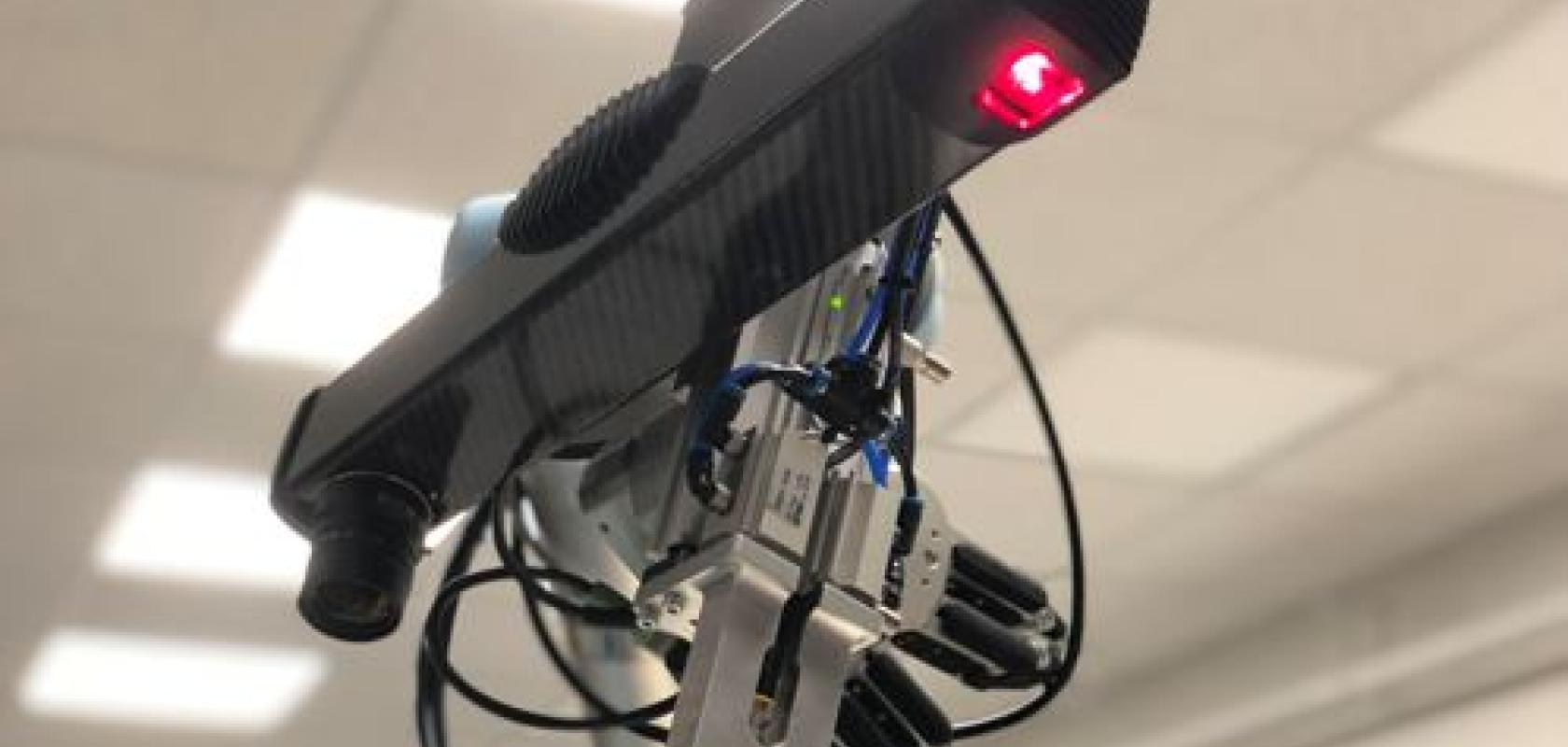Slovakian 3D imaging firm Photoneo has won the Vision Award innovation prize at the Vision trade fair in Stuttgart, held from 6 to 8 November.
The company’s PhoXi 3D camera, which is based on structured light, is able to achieve resolution and precision ten times higher than competing technologies, according to Photoneo.
Gabriele Jansen, managing director of M&A consulting firm Vision Ventures and member of the Vision Award jury, commented that Photoneo’s 3D camera addresses the need for ‘high accuracy, snapshot, [3D] area scan of large work areas in motion’, calling the camera ‘a unique product to date’.
Photoneo was selected as the winner from a shortlist of seven entries that included technology from the Austrian Institute of Technology, Basler, the Fraunhofer Institute for Integrated Circuits, Fujifilm Optical Devices Europe, Prophesee, and SWIR Vision Systems. Imaging and Machine Vision Europe is proud to sponsor the €5,000 prize.
Founded in 2013, Photoneo now has 80 employees. Its parallel structured light technology is based on a custom CMOS sensor, called a mosaic sensor, in which every pixel is programmable.
The sensor is able to capture multiple images of structured light in parallel, rather than sequentially as is the case with conventional CMOS imagers. It’s this parallel operation that allows the sensor to image moving objects, something that’s not possible with depth imaging using standard structure light projection.
In snapshot mode, the PhoXi camera can capture a 1,068 x 800 resolution at 60fps. The per-pixel exposure of the projection is 10μs, which ensures no motion blur. These points are interpolated from around 500,000 individual measurements, and the typical standard deviation of z-noise at 1m distance is less than 0.5mm. The sensor uses 4.5 pixels per 3D measurement with sub-pixel accuracy coding, which gives a high XYZ resolution.
Speaking to Imaging and Machine Vision Europe at the trade fair, Tomas Kovacovsky, CTO of Photoneo, said the sensor could potentially run at 150fps using a more powerful light source.
The camera is also able to operate in a scanning mode for static scenes. Here, the sensor returns a raw output of 1,602 x 1,200 individual measurements. It fuses together 120 snapshot images in real time to give a high resolution image.
Kovacovsky listed potential applications for the technology as ranging from robot guidance, to palletising, to making 3D measurements from a drone, something that the technology is able to do because of its ability to deal with motion.
Photoneo’s technology also features ambient light suppression, for which the firm has a patent, and which Kovacovsky stressed is what makes the PhoXi camera so attractive for 3D imaging. He said: ‘We believe we can handle direct sunlight.’
The ambient light suppression works in sync with the projector and the sensor to control light sensitivity at the sensor surface. The camera's control circuit can disable 99 per cent of the sensor so that it doesn’t collect photoelectrons from optical inter-reflections. This effectively suppresses the ambient light of any source by a ratio of 1:100.
Kovacovsky said the firm’s mosaic sensor is reprogrammable and can therefore be used for various different applications. He noted that Photoneo is talking to potential partners about how these companies could make use of Photoneo’s sensor.


